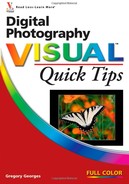Taking good photographs has more to do with a photographer's vision and the knowledge of her camera than buying and using expensive photographic equipment. Undoubtedly, some of the more expensive digital cameras enable you to take better photographs, but if you really want to improve your photographic success, learn how to shoot better. Learn to choose subjects that you are passionate about. Assess and choose good shooting conditions. Determine your own photographic vision. Use your knowledge of your camera to capture that vision.
You also need lots of time to shoot, study, edit, and wait. You may need to wait for better light, less wind, or even for the subjects that you want to arrive. When conditions are good and you are ready to shoot, you must have your photographic vision, and you will need to know how to compose. The exciting new world of digital photography offers every photographer many new benefits that make it easier, faster, and cheaper to learn to make excellent photographs more often.
What makes good photos? One of the best standards to use to determine if you have taken a good photograph is to simply ask yourself if you like it and if you enjoyed the process of making it. Listen to the advice and opinions of others, but shoot for yourself and your own enjoyment. If you do, and you work hard and put in the time, you will become a good or maybe even a great photographer.
For many reasons, you should make it a habit to carefully assess shooting conditions before taking any pictures. Besides determining if it is worth your time to shoot at all, you should also decide how to get the best photographs you can from the existing conditions. What are good shooting conditions?
One of the amazing things about photography is that there are few rules that always hold true. Although it is safe to say that it is more difficult to get good photos with midday sun, you can find many remarkable examples of how wrong it is to always accept such a guideline as a rule.
Would an early morning shot with light illuminating the white farm buildings improve this evening shot?

Is this a good beach color? Will it get better later? Should you use a faster shutter speed to underexpose it a bit for richer colors?
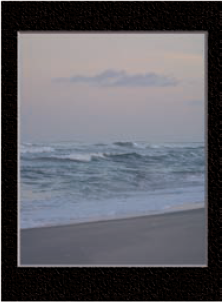
Could you choose a better background for this white poodle?

Is there too much wind to get a well-focused photo of this bee bathed in rich garden colors? Or does the wind help to create a soft-focus effect?
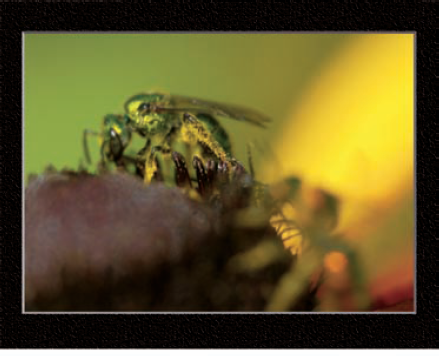
Can good photos be taken in a snowstorm? How will this scene look in an hour, two hours, or even more?
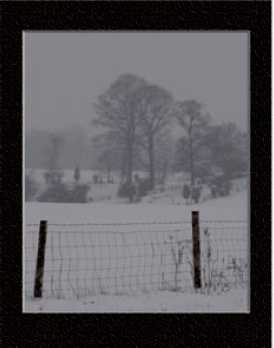
Tip
Photo Tip!
When you are shooting in less than ideal conditions, look for inventive ways to get good photographs. A torrential downpour may leave you with wonderful patterns in water puddles that reflect your subject. Or wind that is too fast to enable you to take close-up photos may help you get award-winning soft-focus photos if you use a slow shutter speed to capture blowing flowers.
Each time that you press the shutter button to take a picture, you analyze dozens of different variables, including exposure, composition, lighting, depth of field, angle of view, and ISO setting. To get better photos, think about how you can change the variables to take many different photographs. Study them to find the ones that you like.
The more you experiment and study your results, the more likely you are to get an understanding of what you like and how to further develop your style. For good practice, carefully consider how you can shoot differently. Because many good photographers shoot the same subjects, getting fresh and interesting photographs demands considerable thought.
The exposure was increased slightly over the metered exposure to brighten the statue.

This exposure was the result of the camera's metering.

A slightly underexposed setting causes the background to disappear.

This slightly tighter framed photo puts more attention on the hand gesture.

This tightly cropped photo emphasizes the face.

This horizontal composition helps the viewer feel more "face to face" with the statue.

Tip
Apply It!
You can sometimes get new and interesting photographs by going to extremes. Shoot at extreme f-stops, extreme shutter speeds, and extreme angles of view. Then, back off just a bit. Maybe try the other extreme and then back off just a bit. Ample experimentation will eventually yield photos that you like.
Although many guidelines help you to compose well, most of them have been routinely broken while still creating excellent photographs. So use the common rules, such as the "rule of thirds" (locate the main subject on one of the intersecting lines of an imaginary tic-tac-toe board overlaid on the image), as mere guidelines, not as hard-and-fast rules that cannot be broken.
Using a digital camera with a zoom lens enables you to try different compositions without having to move as much. You can shoot a wide-angle photo and then zoom in to compose a much tighter view of the subject.
This photo was composed using the "rule of thirds."
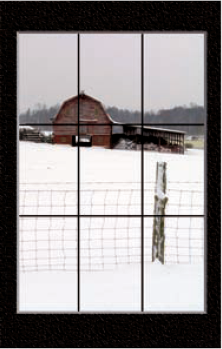
Framing the swamp with the foreground trees made this more interesting than an unframed version.
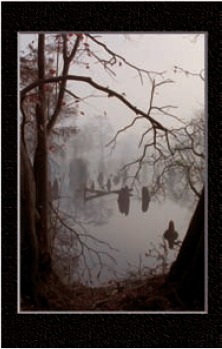
Adding a long expanse of the rusty hood in this photo shows where this dirty junkyard cat is napping in the sun.

A soft background keeps focus on the tiny green tree frog.

Composing the shot of this building in this way further emphasizes the architectural perspective.
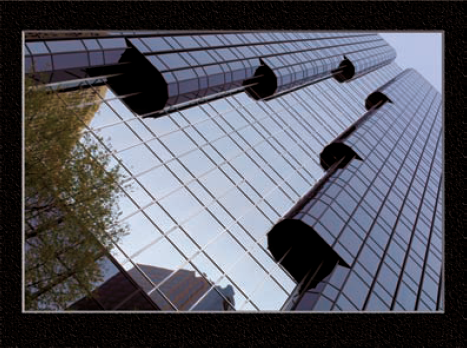
Tip
Apply It!
You can help convey information to the viewer about your subject by framing a photo with the foreground. Applying this powerful technique also makes viewers feel as if they are in the photo. Without this foreground, there is nothing but the subject.
For a number of reasons, you should shoot photos based on a theme. First, if you have chosen a theme that you are interested in, you will enjoy taking the photographs. You will also find that you will become a better photographer as you continue to learn and work toward getting better photographs of a similar subject. Having more than one or just a few photos of a subject helps you to compare what is good and not so good in each shot.
The photos in this task are good examples of one very specific theme — antique automobile hood ornaments. Notice that all but one of them are Mack truck hood ornaments.
This Mack truck hood ornament was shot to have a soft background.

The rust on this hood gives a clue to the age of the vehicle that the ornament is mounted on.
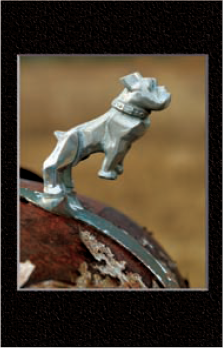
This is a hood ornament from a Mack fire truck.

This graceful hood ornament is from an antique Packard automobile.
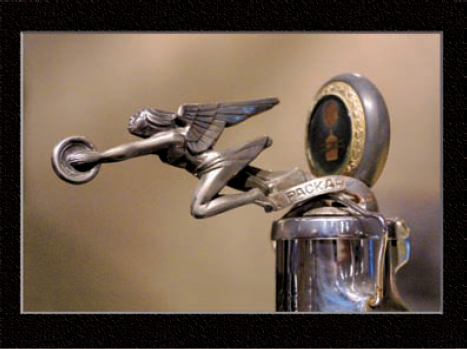
Here is another Mack truck hood ornament shown against a rusted truck body.
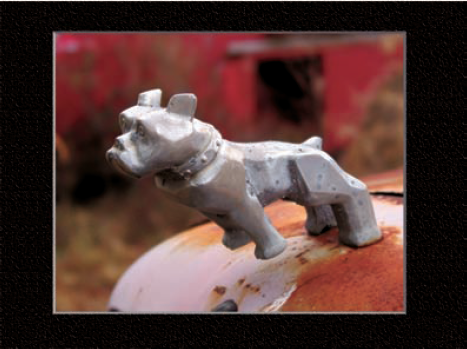
Tip
Apply It!
As you shoot photos based on a theme, carefully consider how you compose them and how they will work together as a series. Should you shoot some in portrait mode and others in landscape mode? Should you attempt to have similar backgrounds, or can the backgrounds vary?
If you have seen a photograph and you can correctly name the photographer, you have found a photographer who has a well-developed style. What makes a style? It can be the way a photographer portrays a subject, uses light, or captures colors. Or it may be a more difficult-to-quantify combination of characteristics.
How do you develop a style? Take several photographs to develop your photographic vision and learn more about what it is you see and how you portray it. After you have taken thousands of photos, you will begin to see a pattern. When you notice a style developing, work on it to make it more distinctive, and keep refining it.
This purple and yellow iris is isolated from the soft green background with a telephoto lens.

The vantage point was chosen to provide a sharp contrast between the purple iris and the soft green background.

The aperture was chosen to keep this iris entirely in focus while allowing the background to be soft.
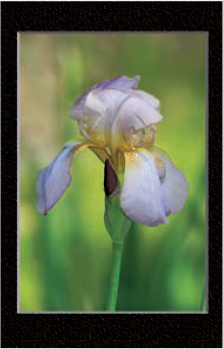
The distance from the iris to the background helped make a soft background for this sharply focused iris.
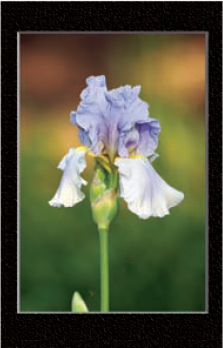
These two photos taken by Larry Berman (www.alternatephoto.com) show a style unique to Larry because of the color infrared technique he uses and the way he portrays ordinary subjects.

Part of Larry Berman's style involves choosing ordinary subjects but shooting them in extraordinary ways.
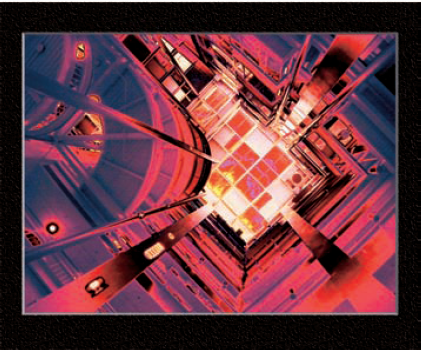
Tip
Did You Know?
Many of the world's most successful and well-known photographers have a style that makes their work notable. Check out the works of Annie Leibowitz, Freeman Patterson, Pete Turner, and Jerry Uelsmann — to name just a few of the great ones.
Although the first inclination is to shoot an entire subject, shooting tightly cropped details can lead to the creation of captivating photos. Detail photos often are more interesting than full-subject shots because you can take a photograph that shows either detail that the viewer had never noticed or detail that may cause the viewer to look closer.
Capturing just part of a subject enables you to put emphasis on the detail that is ordinarily overlooked when viewing the entire subject. When composing detail photos, compose to show form, color, texture, or shape. As you get to increasingly smaller detail, you may want to consider using a macro lens or macro feature.
The close-up photo of this iris was taken to reveal details not ordinarily noticed in photographs that show the entire iris.
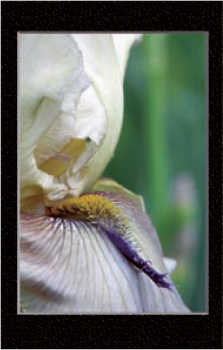
The intricate detail of decay in this ancient church alcove adds interest.

A tightly cropped photo of a custom motorcycle engine makes a wonderful print.

Here is a detail photo of the arched concrete support beams in a church walkway that connects two buildings.
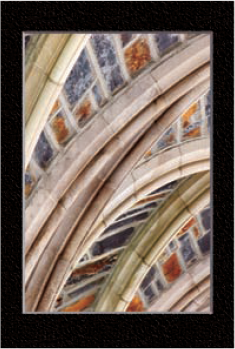
This close-up shot of a sandhill crane reveals incredible detail, including a hole in its beak.
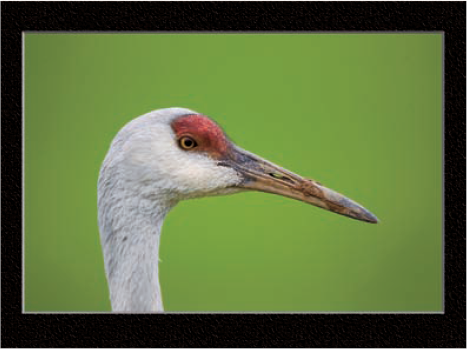
Tip
Apply It!
To catch a viewer's interest, take a photo of just part of a subject to let the viewer imagine what the rest of the subject looks like or to even make her wonder what it is that she is looking at. Also, detail-oriented photos can frequently reveal details to viewers that they would not normally have noticed.
One challenge when photographing with a digital camera is to compose an image in the viewfinder that will translate into an image with the width-to-height proportions that you want. Even though your images may be composed perfectly in the viewfinder, the viewfinder does not have the same aspect ratio as many standard-sized prints. This means that you have to crop the printed image. To avoid having a less-than-perfect photo for any purpose, shoot more than one photo composed for each intended use. The owl photos in this task show how hard it is to get even one good standard-sized print from a tightly framed original photo.
This original uncropped image fits well within the camera's viewfinder.
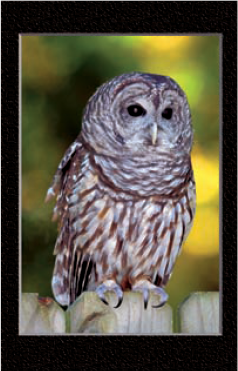
More space above the owl's head would be nice in this 11" × 14" print.
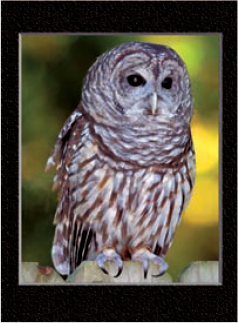
Similarly, more space above the owl's head would be nice in this 8" × 10" print.

The owl is too tightly cropped all around in this 5" × 7" print.
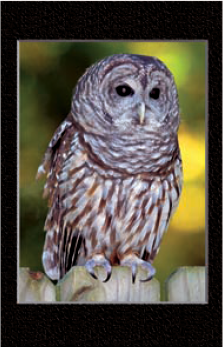
This 4" × 6" print works well, unlike all the other standard sizes.
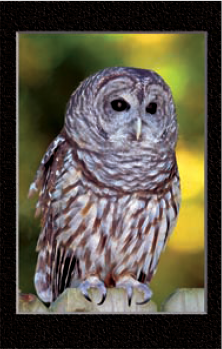
This 10" × 8" print shows the difficulty of printing horizontally if the photo was composed vertically.

Tip
Caution!
If you are concerned about having to crop an image to get the width-to-height proportions for a print or an image for a Web page, make sure that you have set your camera to the largest resolution setting. If you use less than the maximum resolution, you may not have an image that is suitable for your intended use after it has been cropped.
When you take a digital picture, the camera writes the image to an image file, along with other useful additional information such as the date and time. The camera also records the settings you used.
All this information is written to the image file in a format called the EXIF (exchangeable image file) format. To read this information, you need software that enables you to extract the data. Most camera vendors provide image browser software that lets you read EXIF data while browsing images. Also, you can read EXIF data from most image-management applications. Adobe Photoshop Elements and Adobe Photoshop CS2 offer a file-browsing feature that you can use to view EXIF data.
Here is a digital photo with the camera settings stored according to the EXIF specifications.

VIEW EXIF DATA IN PHOTOSHOP ELEMENTS EDITOR
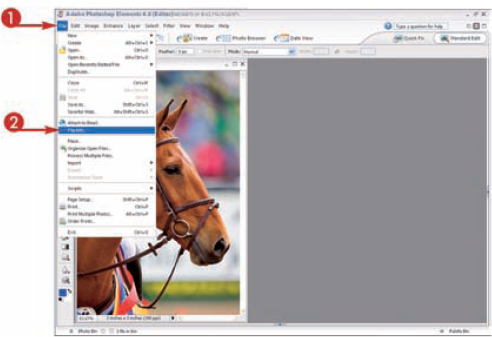
• The File Info dialog box appears, in which you can add your own textual content.

The EXIF data appears, including the shutter speed, f-stop, ISO, and focal length settings.

Tip
Did You Know?
Besides being able to read the EXIF data that is written into a digital photo file by the camera, you can also add your own textual information. Open an image in Adobe Photoshop Elements Editor and click File
Some amateur photographers buy digital cameras and expect to immediately get wonderful photographs. After taking a few hundred photographs with minor success, they get discouraged. To prevent this from happening, use a good work ethic and patience to shoot lots of photographs.
Although a photographic vision and the ability to use your camera to capture that vision are essential, time spent shooting and patience to wait for the best shooting conditions significantly affect your success. Remember that an important part of digital photography is editing with a digital photo editor. After you shoot, open your photos in an image editor and work to learn how to edit your photos.
Take a hike to get you and your camera to new and exciting places to shoot.

Great photos often require extraordinary effort, such as getting into a pond with hip waders to get close-up shots of a water lily.
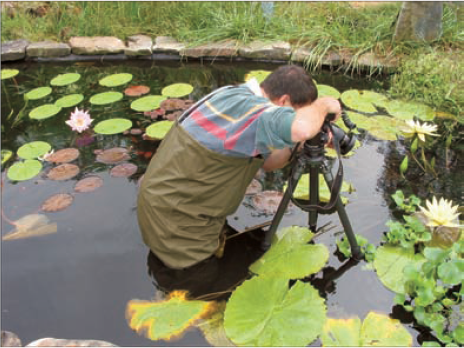
This photographer is patiently sitting while waiting for the perfect sunset at a well-chosen location.

Studying images and EXIF data on a computer will help this photographer improve his picture-taking skills.
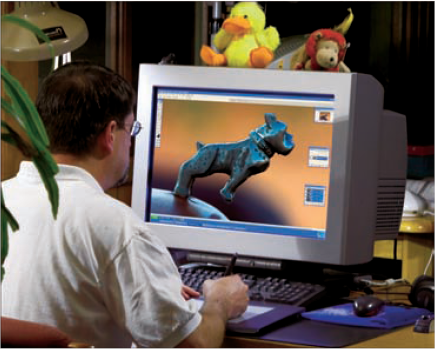
Tip
Did You Know?
Many professional photographers that shoot with film cameras shoot between 20 and 30 rolls of 36-exposure film per day, which is about 700 to 1,000 photos per day. With digital cameras, the cost to shoot each photo is less, and you have the advantage of instantly viewing the photo that you took.
